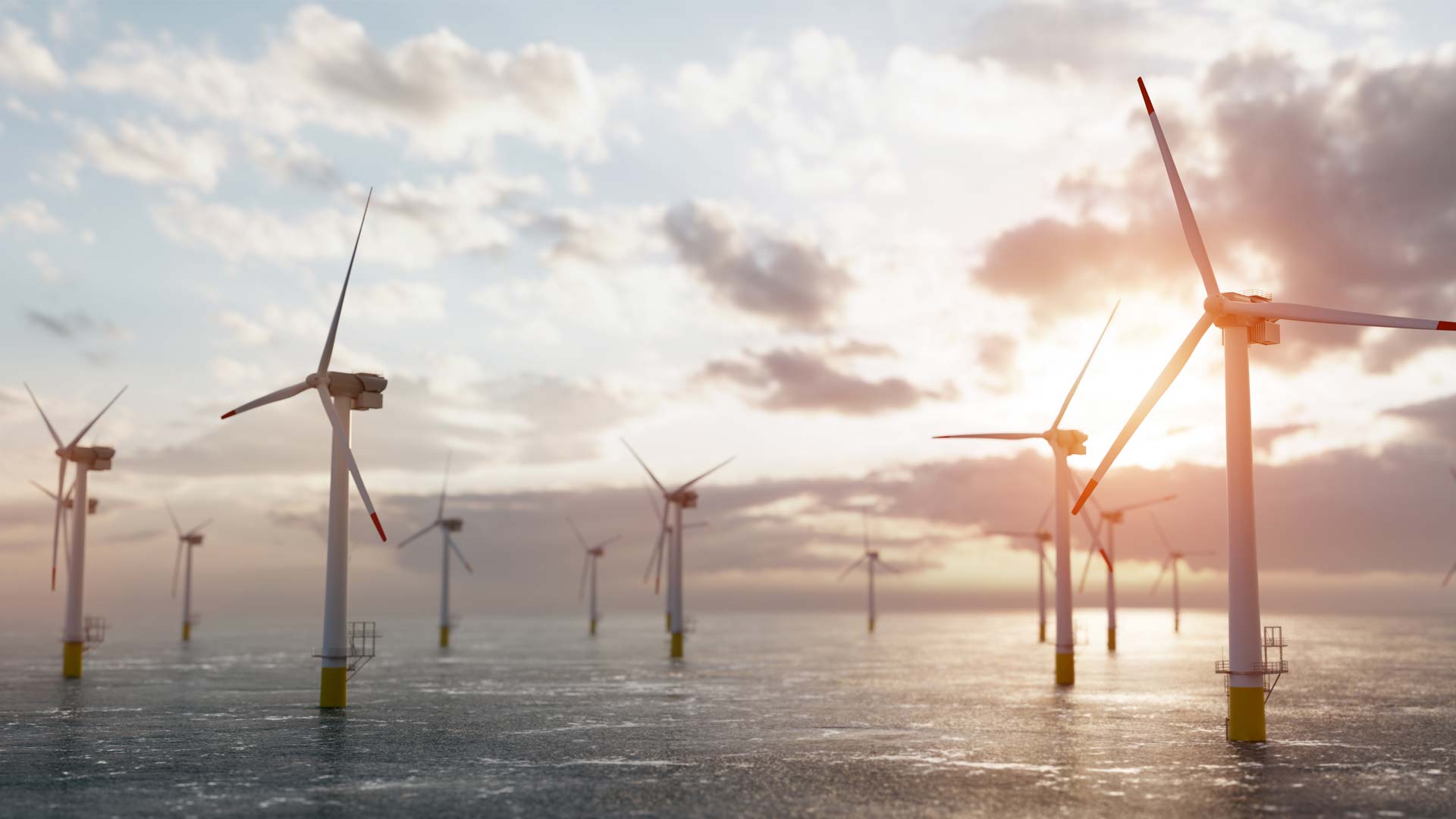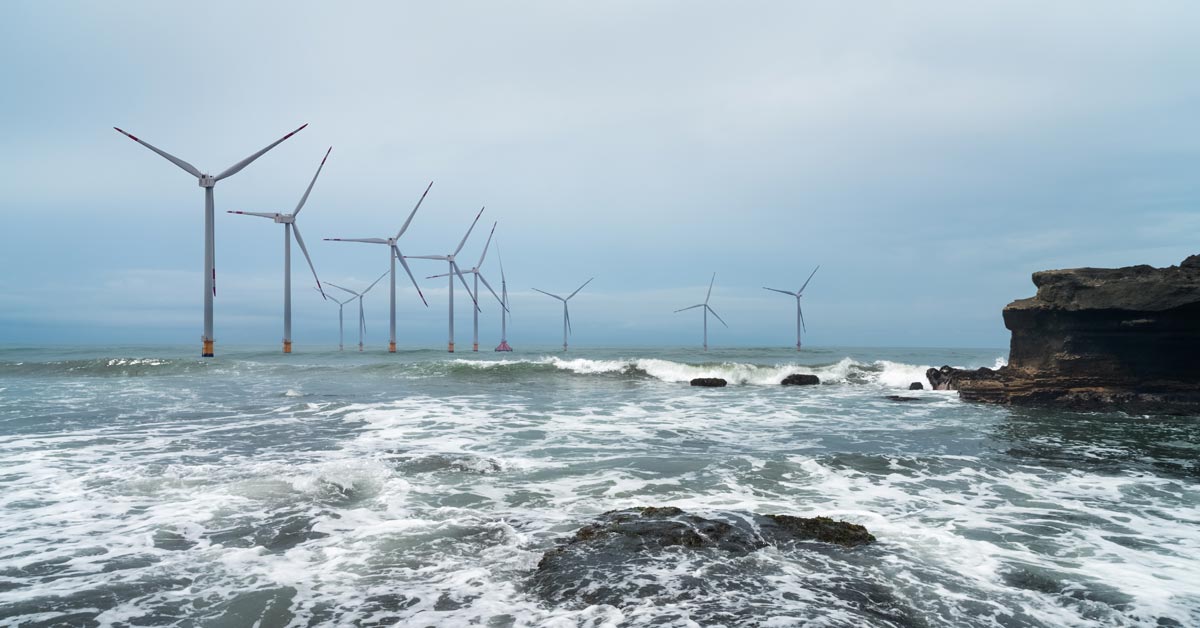Marine Warranty Survey – New JRC Clauses for Offshore Wind
The offshore wind construction market is booming. As mentioned in the 2021 offshore wind report from the Global Wind Energy Council (GWEC) issued earlier this month, last year’s total of 6.1GW of newly installed wind capacity was a slight reduction on the record 6.24GW installed in 2019, but it still represents a very large volume of construction activity in the sector, considering that the total installed offshore wind capacity at the end of 2020 was 35GW. However, this is only the beginning and GWEC forecasts that 235GW of new offshore wind capacity will be installed over the next decade.1
It is clearly good news that the sector is expanding so rapidly, but it does bring challenges and risks. Whilst there are many experienced contractors and personnel working in the market, the increase in projects mean that existing contractors will need to rapidly increase their headcount, and new contractors will be drawn to the sector. At the same time, the need to reduce capital expenditure (particularly with subsidies reducing or being phased out) puts pressure on operators and contractors to complete the projects in an ever more cost-effective way.
The use of less experienced crews and the pressure to complete projects quickly to keep on schedule to avoid penalties raises the potential that unnecessary risks will be taken, which can lead to injury and damage to assets and equipment.
There are various ways in which underwriters can manage their exposure to this risk, but the best route is to avoid the risks being taken in the first place. One of the most effective ways to achieve this is through efficient use of the Marine Warranty Surveyor (MWS).
At their best, the MWS is the eyes and ears of underwriters on the project, working in a collaborative way with the project and contractors to ensure that the MWS’s significant experience is used to mitigate risks and ensure that pre-agreed procedures are followed. However, in recent years MWS clauses in offshore wind insurance policies have varied greatly from policy to policy, and have often been quite ambiguous as to their intended scope and effect. The result is that there is considerable uncertainty as to what powers the MWS has, and what underwriters can do to protect their position in case the MWS’s recommendations are not followed etc.
The new MWS clause and scope of work
Against this backdrop it is very welcome that the Joint Rig Committee (JRC) has published a new MWS clause for use in offshore wind policies (JR2021-028A) accompanied by a new code of practice (COP) and scope of work (SOW) for offshore wind (JR2021-028). The MWS clause is based on the clause that has been used successfully for many years in the upstream oil and gas insurance market. The new clause has a number of important features, including:
- Cover under the policy is said to be conditional upon appropriate Certificates of Approval (COAs) being issued by the MWS. In other words, if the MWS declines to issue a COA for a particular element of the project but the insured continues regardless, then there is no cover for any loss that may result;
- There is an obligation on the insured to comply with all recommendations, requirements or restrictions given by the MWS. Again, the remedy is clearly expressed – in the event the insured ignores those recommendations and a loss results then it will not be covered; and
- The MWS is given express consent to communicate with underwriters and provide them information. This means that a MWS’s concerns whilst a project is ongoing can be communicated, and underwriters can discuss possible breaches with the MWS post-loss.
From ambiguity comes focused clarity
In order that the new clause may be effective, a comprehensive MWS SOW is essential. SOWs have evolved over time, and best practice has been adopted from the upstream oil and gas market. Looking back to 2019, recognising that there was room for improvement in the use, qualification and deployment of the MWS in the context of upstream oil and gas, the JRC’s upstream COP and SOW (JR2019-006) introduced a stable and clear foundation for underwriters, brokers, assureds and marine consultancy providers alike as to the standard expected in that market.
A reciprocal standard, however, has been sorely lacking in the rapidly expanding world of renewables. With this growth comes development in terms of size, capacity, location complexity and, perhaps crucially for renewables at present, technology innovation. To ensure that a reasonable, considered perspective was being taken on the approach, methodologies and engineering rigour adopted by the operators and contractors a comparable MWS COP and SOW was essential.
The new JRC JR2021-028 has been broadly based on the upstream equivalent, adopting many of the key features and lessons learned. One such example is the pre-qualification of the MWS to demonstrate a requisite knowledge and experience to properly discharge their duties. Under JRC JR2021-028 the MWS must either be qualified by the Society of Offshore Marine Warranty Surveyors (SOMWS), or have completed JR2019-009 (which is an alternative means of demonstrating competence). This requirement should be rigorously adhered to avoid the undesirable circumstances where an appointed surveyor is of the wrong discipline for the task at hand or, worse, that they have insufficient experience to spot errors during an operation. These minimum requirements should help to ensure that MWS standards are upheld, which will be especially important in new jurisdictions which may not have a long history of offshore construction to call on.
Where the new document varies significantly from its upstream equivalent is within the various SOWs. The individual scopes distinguish between wind turbine components, offshore substation topsides and foundations, floating wind, and (importantly) cable operations. Within the six separate scopes is sufficient variation to recognise the differences that exist between different designs/ installation methodologies, and clear guidance is provided on the minimum number of COAs to be issued.
A notable, and key, difference to the upstream equivalent SOW is the recognition of the number of COAs to be issued across a wind farm. JR2021-028 gives specific attention to the fact that foundation designs can, and do, vary across an individual wind farm, requiring that “For WTG Foundation installation COAs shall be issued for 20% of all foundations of the same design and/or installation method.”2 This departs from a broad ‘first in series’ approach, and reflects the risk arising from pile punch through or refusal, for example, as the seabed conditions change.
As highlighted in Ed. 2 of Renewed Perspectives, floating wind is one of the next challenges on the offshore wind horizon. JR2021-028 recognises the complexity of this aspect of the industry, with separate COAs stipulated for each turbine installation in contrast to 20% guidance for fixed bottom turbines. This is an important distinction focussing the interested parties on the complex risks associated with installing each floating foundation. While the upstream oil and gas industry is experienced in floater installations, the number, frequency, and cost margins experienced in offshore wind require some adjustment.
One of the most important new features of JR2021-028 is within the cable SOW fabrication and loadout section. There is no escaping cable claims in the renewables insurance market, with conservative estimates citing them as representing 70-80% of all claims.3 The new MWS SOW aims to tackle not just cable installation errors, but also issues at the design and manufacture stage. One available option is for the cable design and manufacturing to be reviewed, attended and a COA issued. This move should not be seen as a broadening of the MWS scope, representing further “intrusion” into the project, but rather a deepening in a critical area. Further, this much needed deeper level of inspection extends to the MWS witnessing, and issuing a COA, for the cable factory acceptance test. This will of course necessitate MWS marine consultancies having access to engineers who are skilled in cable design/ manufacture, which may not universally be the case at present.
In Conclusion
All aspects of the industry will need to pull together over the coming years to ensure that offshore wind construction risks continue to be managed properly, even when the volumes of work are expanding exponentially. The MWS has an important role to play in this process, and the new JRC clause represents a welcome re-statement of their powers, cementing their position as the eyes and ears of underwriters. The corresponding SOW has been carefully considered to set out all aspects of a typical offshore wind installation, allowing underwriters to pick and choose which elements they wish the MWS to review and approve. This means that each scope is well defined and, importantly, ensures that there is consistency across projects.
1 GWEC Global Wind Report 2021, published 09 September 2021, p. 23
2 JR2021_028_Renewables_COP_SOW_COA.pdf, dated 27 May 2021, sec. 1.5.4.1, p. 3
Authors

Renewables Lead
London
+44 (0)7730 445 020
Daniel.Sim@ccint.co.uk
CCi

London
+44 20 7276 4435
Paul.Lowrie@clydeco.com
Clyde & Co LLP

London
+44 20 7876 6086
Max.Braslavsky@clydeco.com
Clyde & Co LLP


